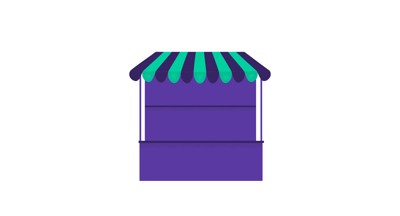November 9, 2023
 by Mara Calvello
by Mara Calvello

 Manage software costs, for free
Manage software costs, for free
Ensure your business isn’t wasting spend on unused tools and licenses with G2 Track Essential.
Maintaining a lean SaaS stack is no easy feat for IT managers, especially with the availability of numerous software applications today.
There's no doubt that the ever-expanding cloud-based software market has made it easier for you to support different operations ranging from finance to sales to marketing with various tools.
But you must have noticed that these software solutions have also made it challenging for you to manage your company's technology subscription stack efficiently. With an average worker using up to 11 applications every day, you must stay on top of contracts, licenses, spending, and usage of all software systems in use.
As SaaS adoption continues skyrocketing, how do you simplify IT procurement and optimize SaaS spending while maintaining software vendor relationships? That's where SaaS vendor management comes in.
SaaS vendor management is the process of finding, evaluating, selecting, and deploying software solutions from different vendors based on business needs. It also involves building strategic vendor relationships, monitoring software usage, and optimizing SaaS spend.
A SaaS vendor management strategy is critical to tackling underutilized software programs, discovering overlapping applications, managing SaaS subscriptions, and negotiating favorable terms with vendors.
SaaS vendor management is the strategy of finding the best solutions to fix problems within a business and then introducing those solutions across the entire organization. This is done by managing application use, improving spend, and reporting on value.
Since so many SaaS vendors provide companies with both business and cloud solutions, it’s important that you choose a vendor management program with the most benefits.
Organizations adopting cloud SaaS environments continue to use a growing number of software solutions every day. Efficient SaaS vendor management enables them to eliminate wasted SaaS spend, mitigate data risks, track vendor performance, improve vendor relationships, and boost operational efficiency.
There are times when different business units and departments in an organization use various tools with similar functionalities. With software prices rising every year, these redundant subscriptions often add up to the SaaS cost. Another example of wasted software budget is when companies end up having unused software licenses.
A SaaS vendor management strategy helps you tackle both challenges by flagging redundant subscriptions and underused software programs. As a result, you'll be in a better position to negotiate with software vendors, eliminate unnecessary subscriptions, and optimize SaaS spending.
No matter how much we think we’re cyber security experts, chances are, most of us aren’t. Even with good intentions in mind, sometimes company or personal information gets shared online. When this happens, your company gets put at risk for phishing scams and DDoS attacks, especially without a strong SaaS vendor management plan in place.
For example, organizations not prioritizing elimination of shadow IT often end up creating unsecured data-sharing pockets and network blind spots. Consequently, they become more prone to hacking and phishing attempts.
When you centralize all of your applications in one place with SaaS vendor management, you’ll be able to effectively see who is making the majority of your software purchases and train them on best practices to keep all sensitive data secure.
Imagine you've onboarded 20 software vendors and renewed contracts with 30 more this year. IT admins in your team can't go back and forth between different vendors to analyze application performance, license usage, or service level agreements (SLAs).
A SaaS vendor management strategy aids you in centralizing the entire SaaS portfolio and having all the necessary information in a single place. This centralization of vendor data also helps you quickly check if vendors are meeting SLAs, resolve issues, and manage relationships with vendors.
If you’re an organization that is selling a product or service to another company, chances are you’re going to make it as easy as possible for it to be purchased.
Factor this in with so many people having a company credit card on file, it’s easier than ever to add another subscription to the balance sheet. For example, your sales and marketing teams may be subscribed to different business proposal tools. Instead of having redundancies, assist them in finding the best one and opt-out on the others. This way, your company can make the most of every tool.
With SaaS vendor management, these accumulating costs of software will no longer go unmanaged, providing you with increased visibility of all of your purchases and showing you where there is room to potentially cut back. All of your accounts payable, subscriptions, and employee expense information can be managed in one place.
If you’ve ever purchased a new software tool, only to find out it has similar functionality to a different tool you already have, you know how frustrating that can be.
For example, maybe each department in your company uses its own expense management tool. When your marketing team uses Expensify and your sales team uses SAP Concur, your company is wasting money, as both of those tools do the same thing. Task management tools can be used across many departments too. Coordinate with your project management office to know how their teams handle their to-do’s and see if you can cut back on a few redundant subscriptions.
When you utilize SaaS vendor management, you can see where your company is experiencing overlaps in functionalities and make the necessary steps to save money by choosing one and using it across your entire organization.
A SaaS vendor management strategy eases how IT administrators tackle day-to-day tasks, minimize downtime, and resolve technical issues. This efficiency helps employees access the tools they need to do their job with utmost efficiency.
When you’re ready to scale your SaaS vendor management strategy, there are some best practices that you should keep front and center. Here are some tips for you to get started.
Managing SaaS vendors becomes easier when you set clear communication channels and single points of contact (SPOCs) from the beginning. Also, consider setting regular check-ins with vendors to discuss performance KPIs, upcoming product updates, escalation processes, and support-related issues.
Maintaining an open and transparent communication channel with vendors is vital for building strong vendor relationships and boosting employee productivity.
A SaaS vendor management process acts as the foundation for evaluating, selecting, and measuring different software tools for your organization. Start by defining a SaaS vendor management process that clearly outlines vendor selection criteria, contract processes, and reporting guidelines. Also, consider establishing security and compliance standards that you’ll follow while onboarding new vendors or reviewing performance of existing ones.
Setting up a process for evaluating and selecting potential software vendors goes a long way in streamlining IT operations. As an IT admin, you can start by creating a method for identifying organizational needs, researching vendors, evaluating their capabilities, requesting proposals, and negotiating contracts. Ensure that the evaluation process considers customer reviews and the track record of the software vendor.
Negotiating contract terms can be daunting but is essential to keeping software costs within budget. Start by comparing the prices of different software solutions to find a benchmark. Also, consider reading industry reports and speaking with peers for software recommendations.
Now, it's time to find leverage points that will help you craft a negotiation strategy. For example, can you ask a peer for referral? Is your business growing at an unprecedented rate? Factors like these can become your leverage points.
Once you have a negotiation plan, you're ready to discuss a potential software procurement with the vendor. Also, consider discussing pricing terms, SLAs, intellectual property clauses, and other terms during the negotiation.
Creating a SaaS vendor management policy also aids you in setting guidelines around conducting regular software performance reviews and analyzing performance data. Key performance indicators IT admins track include issue resolution rate, response time, and uptime. Evaluating these metrics at regular intervals is critical to ensuring software applications meet your needs.
IT admins should also create a contingency plan to set measures for addressing vendor dependency-related risks. Consider identifying a few alternative SaaS vendors who can help you minimize disruption and ensure business continuity when something goes wrong with your existing software.
The best way to stay on top of SaaS vendor management is to collect feedback from your team, identify improvement areas, and improve the existing plan iteratively.
A complete SaaS management platform like G2 Track can automate a ton of these tasks for you.
For instance, G2 Track can:
Want to use G2 Track for SaaS vendor management? Sign up for the free forever plan today!
Mara Calvello is a Content and Communications Manager at G2. She received her Bachelor of Arts degree from Elmhurst College (now Elmhurst University). Mara writes content highlighting G2 newsroom events and customer marketing case studies, while also focusing on social media and communications for G2. She previously wrote content to support our G2 Tea newsletter, as well as categories on artificial intelligence, natural language understanding (NLU), AI code generation, synthetic data, and more. In her spare time, she's out exploring with her rescue dog Zeke or enjoying a good book.
 Manage software costs, for free
Manage software costs, for free
Ensure your business isn’t wasting spend on unused tools and licenses with G2 Track Essential.
PeerStreet leveled the playing field between Wall Street and Main Street by taking on one of...
 by Rachel Ramsey
by Rachel Ramsey
Last week’s G2 Track webinar focused on solutions around epic vendor management projects and...
 by Rachel Ramsey
by Rachel Ramsey
Deciding which software your team uses day in and day out is a big commitment.
 by Mara Calvello
by Mara Calvello
PeerStreet leveled the playing field between Wall Street and Main Street by taking on one of...
 by Rachel Ramsey
by Rachel Ramsey
Last week’s G2 Track webinar focused on solutions around epic vendor management projects and...
 by Rachel Ramsey
by Rachel Ramsey


